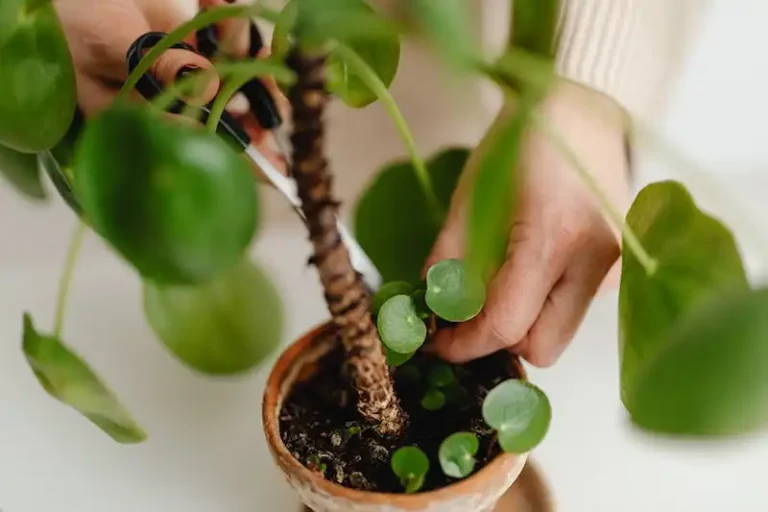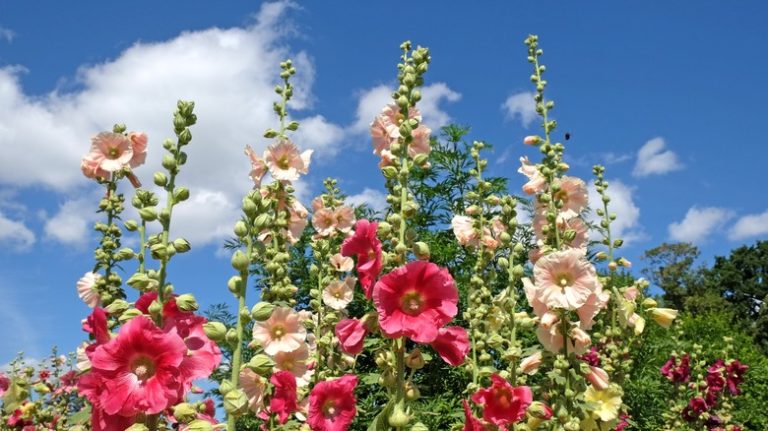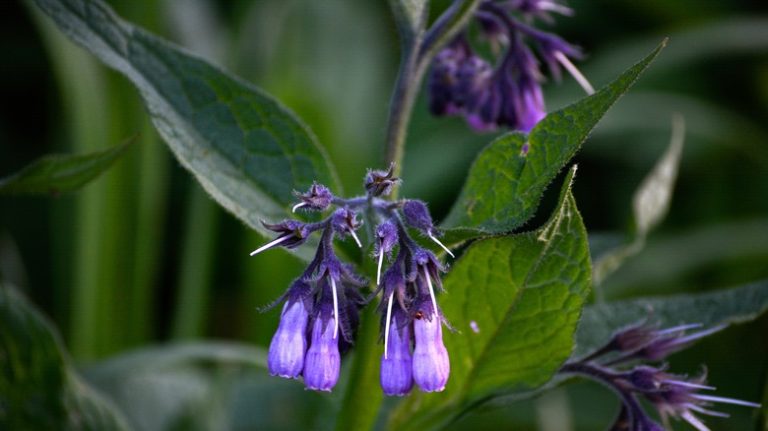Geraniums, or pelargoniums as they’re more commonly known in the genus, are a popular plant to propagate. If you’re wondering how to take geranium cuttings, you’re in luck! It’s a simple process that can be done with just a few tools and some patience.
When taking geranium cuttings, it’s important to use sharp, clean pruning shears or scissors. This will help ensure a clean cut and prevent the spread of any diseases. Zhang, a photographer by profession, explains how he uses his tools to snip off healthy shoots from the parent plant.
One of the most common methods for propagating geraniums is by taking stem cuttings. To do this, simply snip off a 3 to 4-inch section of a healthy stem just below a leaf node. This is where the new roots will form. Zhang also recommends taking the cuttings from the parent plant in the early morning or late in the day, when it’s cool.
Once you have your cuttings, you can prepare them for planting by removing any lower leaves and trimming the remaining leaves in half to reduce moisture loss. Make sure to use a clean, sharp knife for this step to avoid damaging the plant. Zhang suggests using an eco-friendly hormone powder to promote root growth before placing the cuttings in a potting mix.
It’s important to note that geranium cuttings prefer warm, bright conditions for optimal growth. They should not be planted outdoors until all risk of frost has passed, which is typically around June 1st. During the rooting process, it’s important to keep the cuttings moist, but not overly wet. Zhang advises watering the cuttings lightly every day or every other day, depending on the moisture level of the soil.
In about two to four weeks, your geranium cuttings should have rooted and be ready for transplanting into individual containers or garden beds. Zhang suggests using plastic containers as they can be easily retrieved and cleaned for future use. Once the new plants have been moved, continue to water and care for them as you would any other geranium plant.
So, if you’re looking to expand your geranium collection or simply want to save some money on new plants, taking geranium cuttings is a great way to do so. With a little patience and some basic tools, you can successfully propagate your favorite geraniums and enjoy their benefits all season long.
Geraniums–How to Grow Propagate
If you want to grow and propagate geraniums, also known as pelargoniums, in your garden, there are a few tips you should follow. Geraniums are commonly used by gardeners because of their eco-friendly benefits and beautiful flowers.
When starting with geraniums, you’ll likely need to wait until June. This is when the weather is cool and suitable for geranium growth. Once you have a healthy geranium plant, you can snip some cuttings to propagate new plants.
To take geranium cuttings, you’ll need a pair of horticultural scissors or pruners. The best time to take cuttings is in the morning when the plant is fully hydrated. Cut a stem that is around 4 to 6 inches long, just below a set of leaves.
Remove any leaves from the bottom half of the stem, as these can rot when placed in water or soil. You can dip the cut end of the stem in rooting hormone to encourage faster rooting.
Next, prepare a planting pot or container with a mix of soil and perlite or vermiculite. Make a hole in the soil mix and place the stem into it. Gently pat the soil around the stem to secure it in place.
Water the cutting thoroughly and cover it with a plastic bag or a propagator lid to create a humid environment. This will help the cutting to retain moisture and encourage root growth.
Place the pot in a bright area, but avoid direct sunlight. You should see roots forming in about 2 to 4 weeks. Once the cutting has rooted, you can move it to a larger pot or transplant it into your garden beds.
Geraniums are annuals, so they won’t survive freezing temperatures. If you live in a colder climate, you may need to bring your geranium plants indoors or move them to a greenhouse for the winter.
Caring for your geranium plants is relatively easy. They prefer well-draining soil and should be watered when the top inch of soil feels dry. Geraniums also benefit from occasional fertilizing with a balanced plant food.
By following these instructions, you’ll learn how to grow and propagate geraniums successfully. Whether you’re an experienced gardener or a beginner, geraniums are a versatile and beautiful addition to any garden.
How do I take geranium cuttings
If you’d like to propagate your geraniums and create more plants, taking cuttings is a great way to do so. Here’s how you can take geranium cuttings:
1. Choose a healthy geranium plant that you’d like to take cuttings from. Look for a stem that is somewhere between 4-6 inches long.
2. Using clean and sharp pruning tools, like secateurs or scissors, snip the stem just below a node (where the leaves meet the stem).
3. Remove any lower leaves from the stem, leaving only a few on the top.
4. Dip the bottom end of the stem into a rooting hormone, which will help the cutting develop roots more quickly.
5. Prepare a well-drained container with a mixture of soil and perlite or vermiculite. Make a small hole in the soil using your finger or a pencil.
6. Insert the stem into the hole in the soil, making sure that the area where the leaves were removed is below the soil line.
7. Gently press the soil around the stem to secure it in place.
8. Water the cutting thoroughly so that the soil is evenly moist but not soggy.
9. Place the container somewhere bright, like a sunny windowsill, ensuring that it receives indirect sunlight.
10. Over the next few weeks, keep an eye on the cutting and water it when the top inch of soil feels dry.
11. After about 4-6 weeks, you’ll start to see roots growing from the stem. Once the roots have formed and the cutting is rooted, you can transplant it into a larger pot or outdoors in your garden.
Geraniums, also known as pelargoniums, are commonly propagated through cuttings because they’re easy to propagate and grow quickly. Taking cuttings is usually done in early summer when the plants are actively growing.
By following these instructions, you’ll learn how to take geranium cuttings and successfully propagate new plants. Happy gardening!
This article was reviewed by a videographer and updated by a gardener. It was last updated on August 2, 2024.
How To Take Geranium Cuttings
Taking geranium cuttings is an easy and cost-effective way to propagate new plants. Geraniums, also known as pelargoniums, are beautiful and versatile flowers that can brighten up any garden or indoor space. If you want to learn how to take geranium cuttings, here are the materials and instructions you’ll need.
Materials Needed
To take geranium cuttings, you will need the following materials:
- Sharp scissors or pruning shears
- A clean, well-draining pot or container
- A rooting hormone (optional)
Instructions
Follow these steps to take geranium cuttings:
- Choose a healthy geranium plant with strong, new growth. Look for stems that are about 4-6 inches long, with at least two sets of leaves.
- Using sharp scissors or pruning shears, snip off the stems you want to propagate. Make a clean cut just below a leaf node.
- Remove the lower set of leaves from each cutting, leaving only the top set of leaves intact.
- If desired, dip the cut end of each stem in a rooting hormone to encourage root growth.
- Fill a clean pot or container with a well-draining potting mix. Make a small hole in the soil for each cutting.
- Insert the cut end of each stem into a hole in the potting mix, pressing the soil gently around it to hold it in place.
- Water the new cuttings thoroughly, making sure the soil is evenly moist.
- Place the container in a bright location, but away from direct sunlight. Geranium cuttings need bright, indirect light to root.
- Keep the potting mix evenly moist, but not soggy. Water whenever the top inch of soil feels dry to the touch.
- Wait patiently. It can take anywhere from 2 to 6 weeks for the cuttings to develop roots. You’ll know they have rooted when you see new growth appearing.
- Once the cuttings have rooted, you can move them to individual pots or to the garden. Be gentle when handling the new plants to avoid damaging the roots.
Taking geranium cuttings is a fun and rewarding activity that allows you to propagate new plants for your garden. By following these instructions, you can create an endless supply of beautiful geraniums–how wonderful!
References:
- Zhang, P., & Cupit, P. ( 2025). Geranium cuttings: benefits and activities. Retrieved from www.malus.com
When To Propagate Geranium Cuttings
Geraniums, or pelargoniums, are commonly grown as annuals in gardens. If you have a favorite geranium that you want to grow more of, one popular method is propagation from cuttings. Taking geranium cuttings is a means of cloning the parent plant, as the new plants will be genetically identical to the original. Here’s a guide on when to take geranium cuttings and how to propagate them.
Geranium cuttings are best taken in early summer, from June to August. This time period is when the plants are actively growing and have enough stored energy to produce new roots. If you take cuttings outside of this time frame, they may not root successfully.
When preparing to take geranium cuttings, you’ll need some equipment. A sharp pair of pruning shears or scissors is essential for snipping the stems. It’s also a good idea to have a clean and sterile potting mix or a mix of perlite and vermiculite for rooting the cuttings. Rooting hormone can be used to speed up the rooting process, although it’s not necessary.
Before taking the cuttings, choose healthy stems that are free of diseases or pests. The stems should be around 4 to 6 inches long and have several sets of leaves. It’s better to take cuttings from the lower portion of the plant, as these are more likely to root successfully.
Once you have your cuttings, you can propagate them in water or in a potting mix. To propagate in water, simply place the stem cuttings in a jar filled with water and wait for roots to develop. If you prefer to use a potting mix, fill a small pot with the mix and make holes for the cuttings. Insert the cuttings into the holes and lightly firm the mix around them.
After the cuttings are planted, keep them in a cool and bright location, but avoid direct sunlight, as this can cause the cuttings to dry out. You can cover the container with a plastic bag or dome to create a greenhouse effect and increase humidity. This will help the cuttings to root faster.
Geranium cuttings usually root within 3 to 4 weeks. Once the roots are formed, it’s time to move the plants to individual pots or outdoor garden beds. Prepare the pots or beds with well-draining soil and allow the roots to establish before giving them full sun exposure.
Propagating geraniums from cuttings is a popular method among gardeners for its simplicity and benefits. By following these tips, you can learn how to propagate geraniums and grow more of your favorite plants.
1 Take Your Cuttings
When it comes to propagating geraniums, the first step is to take cuttings from an existing plant. Here’s how you can do it:
Step 1: Choose a healthy geranium plant from which you want to take cuttings. Look for a plant that has strong stems and vibrant leaves.
Step 2: Gather the necessary equipment. You’ll need a pair of clean gardening shears, a small cup with water, rooting hormone, a plastic bag, and some potting soil.
Step 3: Prepare the plant. Trim the stem of the geranium just below a leaf node, which is where the leaf attaches to the stem. Remove any leaves on the lower one-half of the stem.
Step 4: Dip the trimmed end of the stem into a rooting hormone. This will help stimulate root growth.
Step 5: Place the stem in the cup with water and allow it to soak for a few minutes. This will ensure that the stem is hydrated before planting.
Step 6: Fill a small pot with potting soil, making sure it has good drainage. Remove the stem from the water and plant it in the pot, burying at least two nodes in the soil.
Step 7: Water the newly planted cutting thoroughly. The soil should be evenly moist, but not waterlogged.
Step 8: Cover the potted cutting with a plastic bag to create a mini greenhouse environment. This will help maintain moisture and create a humid atmosphere that promotes root growth.
Step 9: Place the potted cutting in a location with bright, indirect light. Avoid direct sunlight, as this can scorch the cutting.
Step 10: Keep the soil moist, but avoid overwatering. Check the moisture level regularly and water as needed.
Step 11: After a few weeks, check for root growth. Gently tug on the stem to see if it resists, indicating that roots have formed.
Step 12: Once the cutting has rooted, you can trim off any dead leaves or stems and move it to a larger pot or garden bed if desired.
By following these instructions, you’ll be able to easily propagate geraniums and enjoy the benefits of having more of these beautiful and eco-friendly plants in your garden.
If you’re not sure when to take geranium cuttings, it’s commonly done in late summer or early autumn. However, geraniums can be propagated at other times of the year as well, so don’t worry if you miss the ideal window.
Remember, taking cuttings from a healthy and well-established geranium plant means you’ll have a better chance of success with rooting and growing new plants. So whenever you’re caring for geraniums, keep propagation in mind as a means to expand your collection or share plants with others.
References:
– Zhang, P., Cupit, C., & Malus, J. ( 2025). Propagation of Geraniums (Pelargonium spp.) from Cuttings. Extension.


